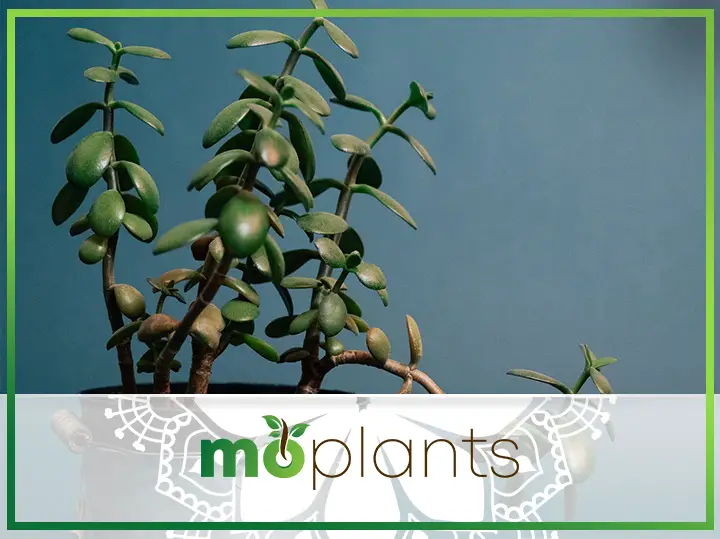Over the past few years, succulents have seen a huge rise in popularity – and rightfully so. These beautiful plants come in a wide range of shapes, colors, and sizes, offering something unique for every beginner and professional home gardener alike. If you are looking for a visually pleasing houseplant with a distinctive form and forgiving nature, the jade plant would be an ideal companion for you.
Native to South Africa and Mozambique, this tropical succulent has become one of the most beloved houseplants in many Western and Asian countries. The peculiar contours of the jade plant have also earned it the monikers of the money plant, money tree, friendship tree, and lucky plant. In Feng Shui, this plant is considered a symbol of luck, harmony, prosperity, and friendship. All of these reasons make it an ideal plant to grow indoors as well as a perfect housewarming gift for friends and family.
You can display jade plants in small decorative pots to add a pop of color and freshness to your space. It will look great on your bedside table, study desk, workstation, coffee table, and console table. Moreover, this succulent is primarily grown indoors. However, it can thrive outdoors in warmer environments as an evergreen perennial shrub.
Introduction: Jade Plant
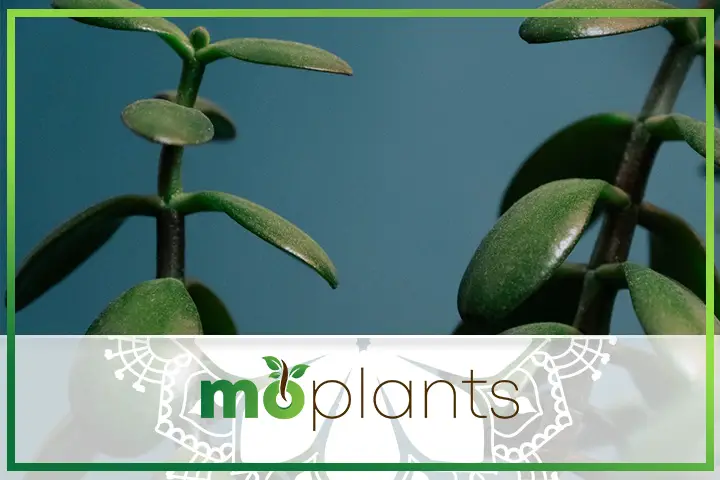
The botanical name of the jade plant is Crassula ovata, and it belongs tothe Stonecrops family. This succulent is usually grown as a houseplant, though if you live in hardiness zones 11 or 12, you can also grow it in your backyard or garden.
Jade plant has thick and fleshy leaves that are round, oval, or tubular in shape. You can find this succulent in various shades of green with silver, blue, golden, red, copper, or burgundy tints. In addition, the plant has a thick stem that gives it a tree-like appearance. In addition, mature jade plants may produce clusters of tiny star-shaped flowers in white or pale pink hues if grown in ideal conditions. The succulent typically blooms between winter and spring.
In its native habitat, the jade plant can grow up to 12 feet tall and 6 feet wide, growing from the soil like a small tree with shiny leaves and breathtaking flowers. On the other hand, this plant can grow up to 8 feet tall and 2 feet wide in an average home environment. Meanwhile, some jade plant varieties may only grow up to a couple of feet. However, this plant is a slow grower, so you should expect it to grow about two inches per year.
One of the best things about growing a jade plant is that it is very low maintenance. It doesn’t require much water to survive, and a few hours of sunlight is usually enough to keep its foliage healthy. In other words, it is not easy to kill this succulent.
While they are wonderful houseplants and don’t need much attention, jade plants are also toxic to pets. So, if you have curious nibblers in your house, you should consider moving your potted succulent to a higher spot to keep it out of reach.
How to Grow Jade Plant
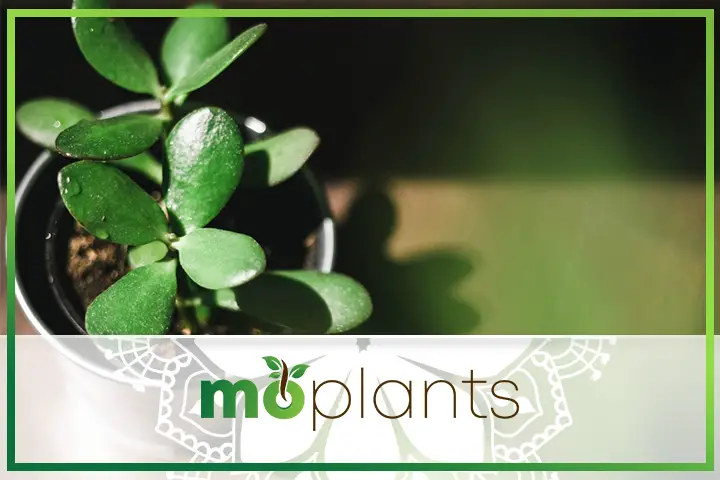
You can purchase this succulent from your local nursery or choose to propagate it. In either case, it is pretty easy to grow a jade plant indoors. If you are an amateur gardener or struggle to keep houseplants alive, here are some tips that may help you out.
Placement
Jade plant loves light, so even if you are growing them indoors as houseplants, consider moving them outdoors during the summer season. You can place these succulents on the window sills in your bedroom, living room, or kitchen. They will also grow pretty well on the balcony, terrace, and patio in the warmer months.
Ideal Temperature
These tropical succulents flourish in warm temperatures ranging between 65 and 70 degrees Fahrenheit. Though the jade plant can tolerate cooler weather, you should move it to a warmer spot indoors once the temperature drops to 55 degrees Fahrenheit.
Prolonged exposure to extreme cold and hot environments can stress the plant and eventually kill it.
Humidity Level
Though jade plants prefer a moderately dry environment, they grow rather well in environments with high humidity as well. So, if you want to keep this succulent in your bathroom, you can do so by choosing a bright spot that receives a lot of bright light.
Exposure to Sunlight
Want your plant to have shiny and happy foliage? If so, you should keep it in a bright spot. The jade plant thrives when it receives a mixture of direct and indirect sunlight. You can keep it outdoors for up to six hours a day, ensuring it is protected during the hottest part of the day as excessive sunlight can burn its leaves. Similarly, your houseplant should ideally receive at least four hours of bright filtered light every day for steady growth.
The succulent can also tolerate lower light levels, but it may affect its foliage.
Watering Frequency
Like most succulents, the thick and fleshy leaves of the jade plant have the ability to retain water. You should preferably water your houseplant thoroughly every ten days or when the soil gets completely dry.
It is not good to water a jade plant too often as it may damage the roots and cause decay. Moreover, reduce your watering frequency during the winter season when the succulent becomes semi-dormant.
Potting Mix
Jade plants need neutral or slightly acidic soil pH to grow, though they are also tolerant of different pH levels. These beautiful succulents thrive in well-drained soil, so if you cannot get your hands on specialized cactus or succulent potting mix, consider adding some perlite to an all-purpose potting mix for your houseplant.
If you don’t choose a soil with good drainage to grow the jade plant, it may lead to excessive moisture and root rot.
Infographic
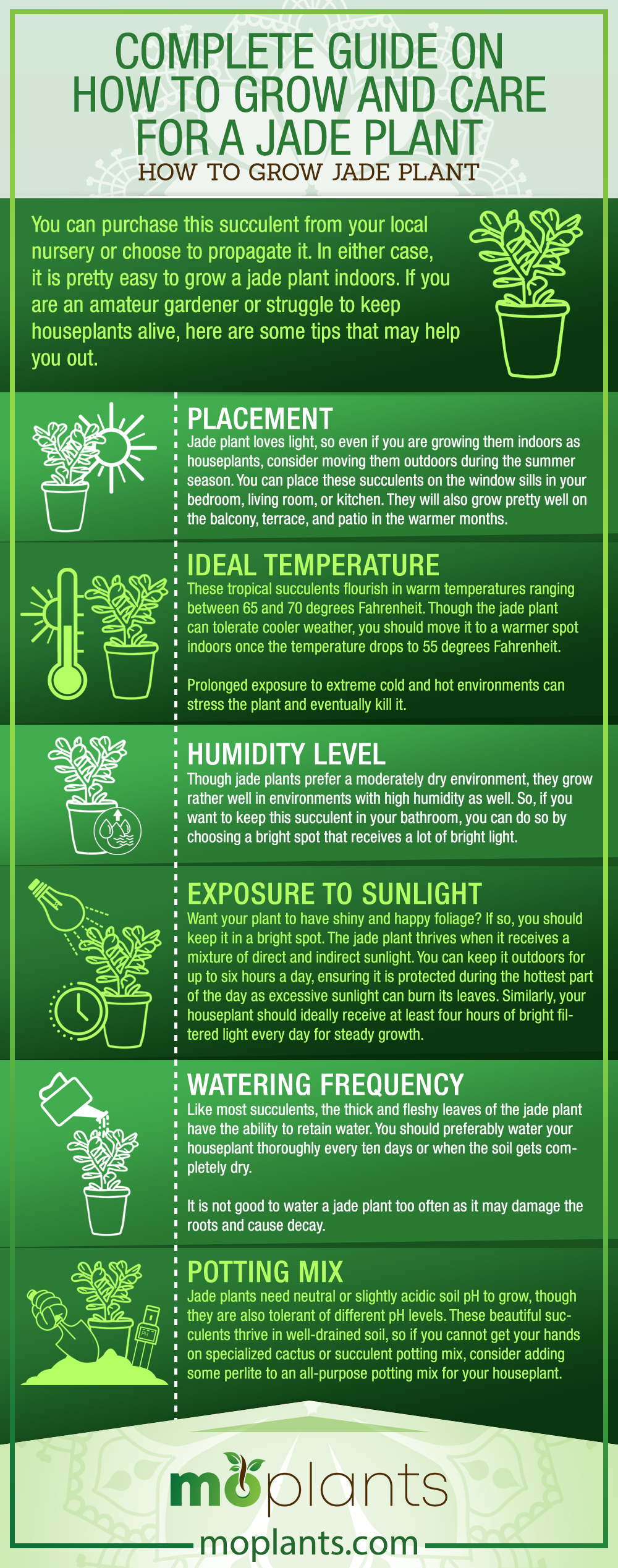
Jade Plant Propagation Method
There are two main jade plant propagation methods you should know about:
Propagate with Cuttings
For jade plant propagation through cuttings, select a healthy cutting of the plant that is about three inches long and separate it from the stem. Allow the end of the cutting to dry out and scab over by placing it in a warm and dry place for a few days. Once the cut end becomes dry, cover it with a rooting hormone powder and put it in the soil.
Until the plant takes root, make sure to only water it sparingly. However, once the jade plant begins sprouting small leaves, you can resume your normal watering frequency.
Propagate with Leaves
If you want to propagate your jade plant this way, take a sharp knife and carefully cut a leaf along with its stem. You can also gently twist it away from the plant. Please keep it in a warm and dry place for a few days until the cutting dries out and scabs over. Next, dip the cut end in a rooting hormone powder and plant it into the potting mix of your choice. It is worth mentioning that you don’t need to bury the leave in the soil. Instead, ensure the stem of the leaf has made contact with the soil.
Mist the cutting and place it in a bright spot. Soon, the roots will grow, and baby plants will begin to appear.
Summer is the best time for jade plant propagation, though you can also propagate it during the spring season.
Jade Plant Care Tips
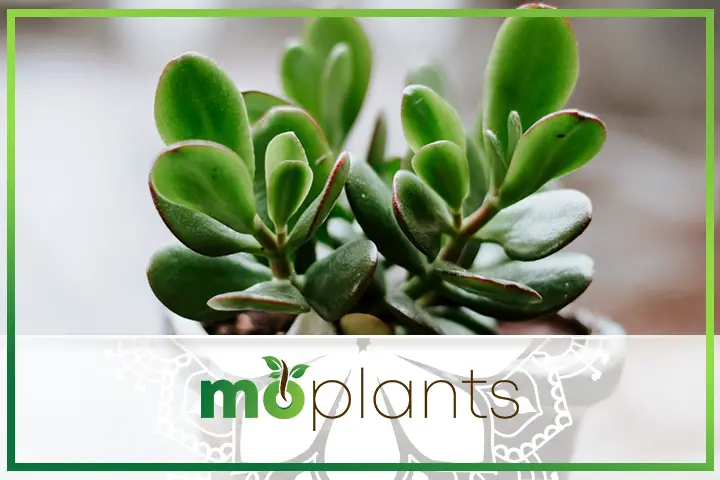
Now that we know how to grow and propagate it, let’s look at some useful jade plant care tips.
Pruning and Trimming
Whether growing a jade plant indoors or outdoors, please wait until it’s a year old before pruning its leaves. The best time to trim your plant is during spring and early summer, as it would encourage new growth. Moreover, make sure to sterilize your shears and knives before pruning the houseplant to avoid the spread of any infections or diseases.
Since the leaves of the jade plant can store water, the older leaves can become heavy and affect the overall plant. Therefore, you should consider pruning such leaves to ensure the succulent remains healthy. In addition, please don’t cut the main truck, as it may kill your beloved plant. It is one of the most important jade plant care tips that can keep your plant alive for years to come.
Fertilizer
This tropical succulent is not a heavy feeder. You can feed it weekly with a half-strength liquid fertilizer or use mild all-purpose organic fertilizer during the growing season. Mature jade plants prefer a balanced 20-20-20 fertilizer at one-quarter strength, whereas the younger ones appreciate fertilizers with low nitrogen.
Cleaning
Want to keep the foliage of your jade plant looking fresh and shiny throughout the year? Wipe the leaves with a damp cloth every couple of weeks to remove dust, dirt, and other debris. This jade plant care tip will also protect it from pest infestations.
Repotting
Along with being slow growers, jade plants also prefer to be pot-bound. Therefore, the younger plants need to be repotted every two to three years while the older ones can live up to five years in the same pot. Ideally, you should report this succulent in the spring season and choose a pot that is only slightly bigger than the existing one.
Choosing Containers
To prevent fungal infections, choose a pot that has an adequate drainage hole. Usually, most people prefer to grow the jade plant indoors in a terracotta pot, which is a great option as its porous surface absorbs moisture and helps keep the soil dry.
You can also use ornamental ceramic or plastic pots to display your jade plants. However, please choose a pot with proper drainage. Additionally, you may have to adjust your watering frequency accordingly.
Is Jade Plant Toxic?
As mentioned above, the jade plant is toxic to pets. The American Society for the Prevention of Cruelty to Animals (ASPCA) classifies this succulent as an extremely poisonous plant for cats and dogs. Therefore, those with feline and canine companions must ensure their jade plants are placed at a location that is not easily accessible.
Symptoms of Jade Plant Poisoning
If your pet displays any of these symptoms after ingesting the leaves or any other part of the succulent, please take them to the vet immediately. The common signs of jade plant poisoning include:
Common Jade Plant Problems and How to Solve Them
Jade plants may not be very temperamental, but they may exhibit some signs when they are under stress, overwatered, underfed, or suffering from some other problem.
Here are some of the most common jade plant issues and their respective solutions.
Wrinkled or Shriveled Leaves
Jade plants have an undemanding nature and won’t show any signs of damage even if you forget to water them for a few weeks. However, if you don’t water them for prolonged periods, their foliage will start to wilt.
The best way to perk up the wrinkled and shrivelled leaves is to water the soil until thoroughly moist. Please wait for the excess water to come out of the drainage hole and discard it as soon as possible.
Shedding Leaves
The most common reason jade plants shed leaves is lack of light. If your succulent doesn’t receive sufficient sunlight for at least six hours every day, it will eventually start losing its leaves. To counter this problem, move your plant outdoors during the summer months. In winters, you can place them next to a window that receives bright light.
Yellowing Leaves
Yellow leaves usually indicate overwatering. So, if you have noticed more than a few leaves turning yellow consider reducing your watering frequency and move the plant to a warmer spot. More often than not, yellowing leaves is an early sign of root rot.
Common Pests and Diseases
Jade plants can be vulnerable to mealy bugs, spider mites, aphids, and scales. In case of infestation, wash the foliage with plain water and move the plant to a bright location to dry properly. Next, dip a cotton ball into 70% rubbing alcohol and wipe the leaves to eliminate the pests.
Infographic
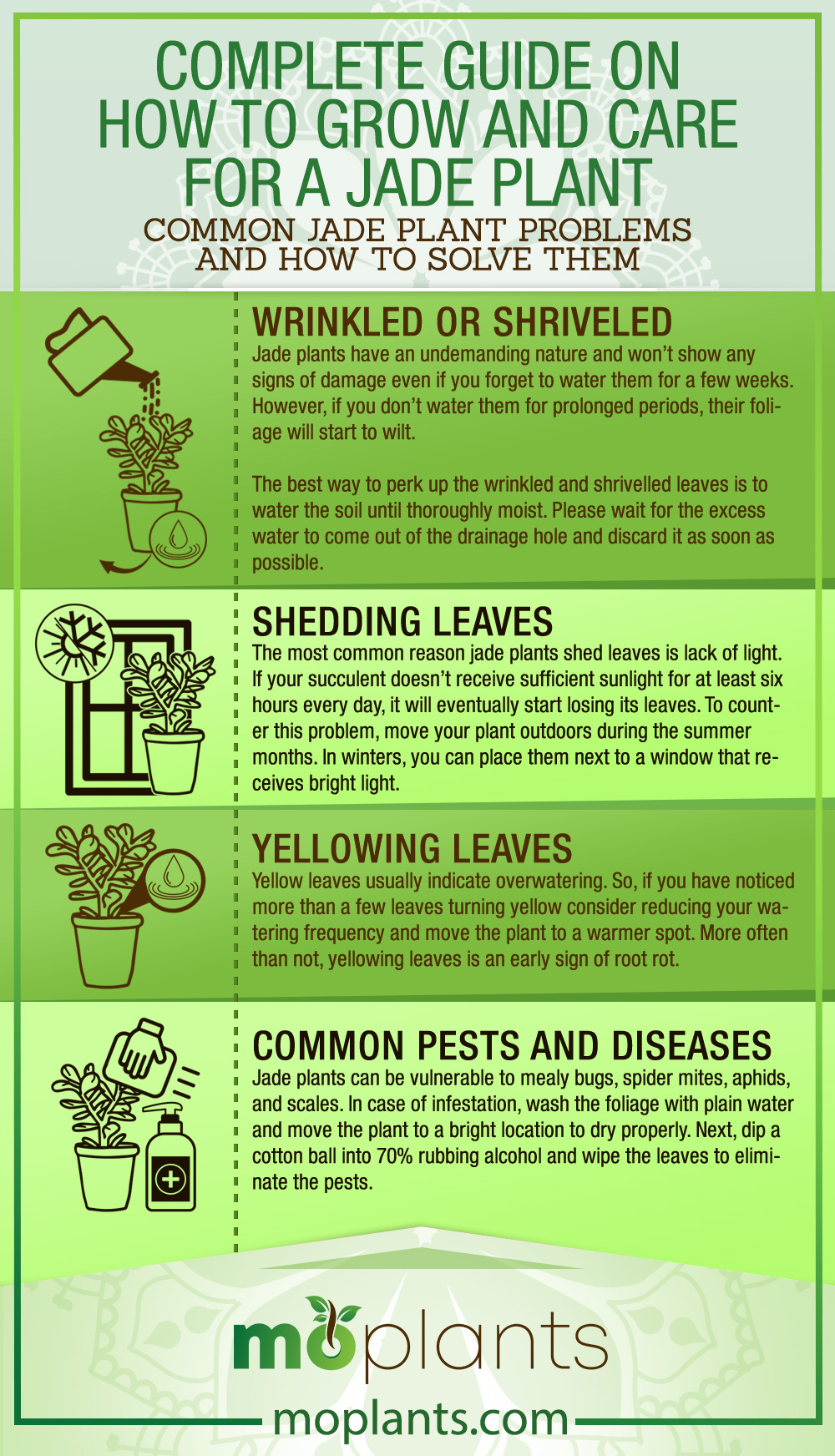
Popular Jade Plant Varieties
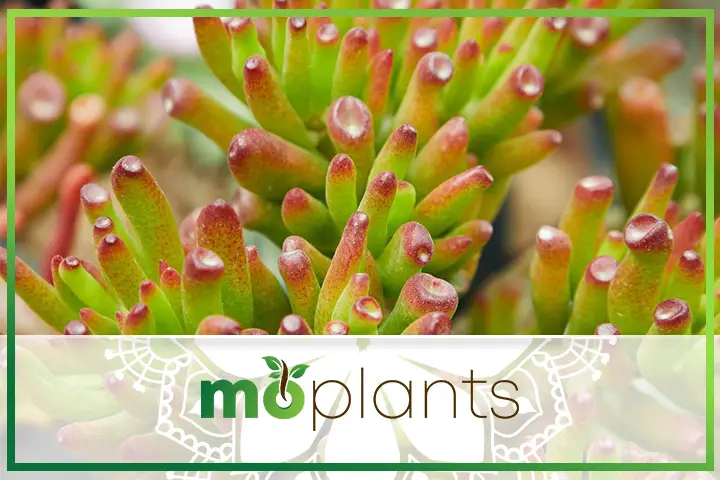
These are some of the most revered jade plant varieties you should know about.
Silver Jade
Silver Jade, also known as Crassula atropurpurea arborescens, is known for its flat silver-blue leaves adorned with a red margin. This eye-catching plant can grow up to six feet tall and is a perfect option for brown-thumbed gardeners owing to its easygoing nature.
Variegated Jade
This variety of jade plants is called Crassula ovata ‘Variegata.’ It has distinctive creamy white variegated leaves and requires the same level of care as a common jade plant. You can grow this variety both indoors and outdoors, depending on the climate.
Skinny Fingers Jade
This jade plant variety gets its unique name from its finger-like leaves that grow up to two inches long and have pointed tips. The long green leaves of Crassula ovata ‘skinny fingers’ have red tips that may get darker as the plant matures.
Jade Plant FAQs
Here are some of the most frequently asked questions about jade plants.
Does the jade plant purify the air?
Jade Plant is not only aesthetically appealing but also improves your indoor air quality. It can have a positive impact on your health by removing harmful toxins from the air.
Does the jade plant need sunlight?
This succulent prefers both direct and indirect sunlight. The best way to grow a jade plant indoors is to keep it in unfiltered sunlight for about four hours a day and then move it to a bright location with filtered light for the next six hours.
How long do jade plants live?
Though it may not be a fast grower, a jade plant can live between 70 and 100 years in its native habitat.
To conclude, it is pretty easy to grow and care for a jade plant. All you need to do is keep it in a bright location and water it every ten days. You can also feed it a liquid fertilizer during the growing season to encourage healthier foliage.

